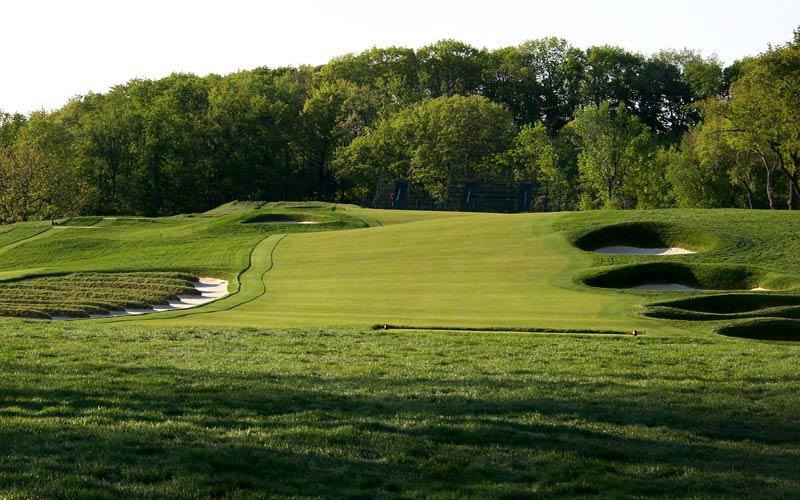Wednesday's Open Clippings: Phil's Wrist
/ Thankfully no one hurt themselves Tuesday, but the boys sure had plenty to say about the course and setup.
Thankfully no one hurt themselves Tuesday, but the boys sure had plenty to say about the course and setup.
John Huggan shares thoughts on the setup and several player reactions.
Has Oakmont, almost universally feared and revered as the toughest, most brutal and most unforgiving track on the US Open rota, been prepared in a way that will allow the best to prosper? Or has the USGA blindly done what it normally does and eliminated any semblance of strategy and flair in a misguided effort to make America's national championship 'fair,' while at the same time producing a winning score some way north of par?
Sadly, the initial signs are that the latter policy has yet again reared its tedious head.
Monty tabs a local Oakmont looper to suffer for four days with him (well...assuming he doesn't fire him too).
Josh Massoud talks to Adam Scott, who has some interesting thoughts on the setup.
But Scott said the experts had confused greatness for toughness.
"That's not what the game is about. It's got to be fair in every area. I think everyone is so hung up with par; there's an obsession with par. If you put the world's best players on a golf course, they should be able to break par."
Rick Starr looks at the 12 amateurs in the field.
This AP story summarizes Johnny Miller's Tuesday press conference remarks.
Furman Bisher says things have never been better at the USGA under Walter Driver, and cites the Shinnecock Hills U.S. Open under Driver's Championship Committee watch as evidence of how Driver gets an unfair rap.
Driver was chairman of the USGA’s competition committee, which means the responsibility of setting up the course was his. “His arid setup,” as Golf World phrases it, “was an embarrassment,” a term to be questioned.
“Arid” refers to the rain which was forecast, but didn’t fall, and the winds which dried out the greens. Curses to the competition chairman.
Wow, I guess Google hasn't made it to the Atlanta Journal-Constitution. Rain in the forecast? Oy...
And finally, back on the planet earth, Craig Dolch blogs about the day's interviews and the demise of the scrum.
And finally, the USA Today's Joe Saraceno writes one of those so-over-the-top-it's-funny columns about Tiger's impending fatherhood.


















